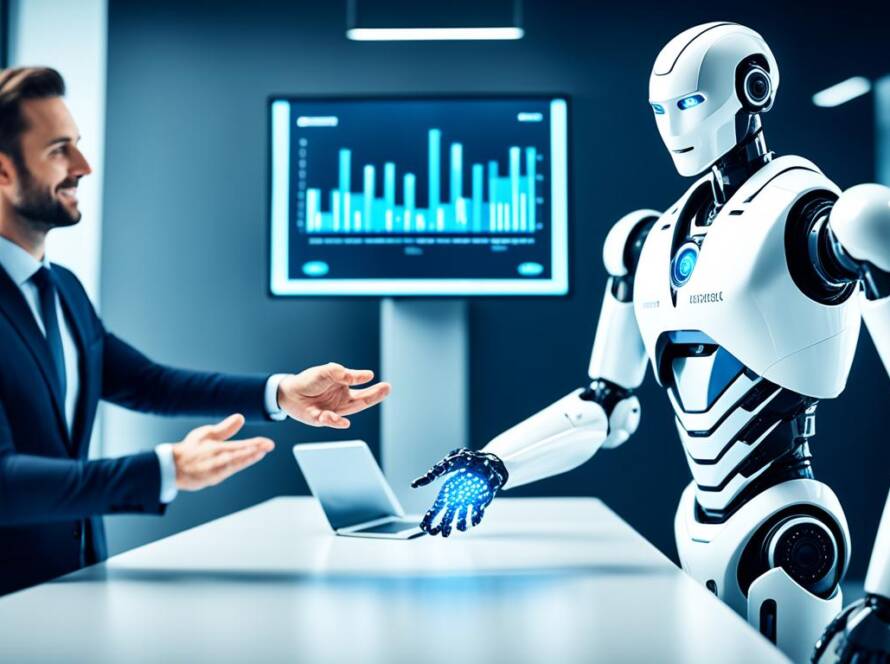Artificial Intelligence (AI) is no longer a futuristic concept—it’s here, reshaping the way we work, live, and solve problems. But despite its growing presence, confusion and misconceptions still surround AI, often making it seem more intimidating or inaccessible than it really is.
Let’s break down six of the most common myths about AI—and set the record straight.
Myth 1: AI Is Only for Big Companies
Reality: Thanks to cloud-based tools, open-source platforms, and no-code/low-code solutions, AI is now more accessible than ever.
What was once exclusive to large enterprises is now available to startups, freelancers, and small businesses. In fact, many small and medium-sized enterprises (SMEs) are already using AI to automate customer service, personalize marketing, and streamline operations.
According to a recent report by the UK government, nearly 15% of all UK businesses have adopted at least one AI technology—and adoption is growing fastest among SMEs.
Bottom line: AI is no longer reserved for the tech giants. Anyone with internet access and a business need can tap into its power.
Myth 2: AI Will Replace All Jobs
Reality: AI replaces tasks, not people.
Yes, AI is automating repetitive, manual work—from data entry to scheduling. But that actually creates room for people to focus on higher-value, more creative, and emotionally intelligent tasks—things machines still can’t do well.
The World Economic Forum projects AI will create 97 million new jobs globally by 2025, even as it automates 85 million others.
Industries are already seeing this shift: content creators are using AI to brainstorm ideas, healthcare professionals are using it to analyze patient data faster, and HR teams are automating resume screening to spend more time on interviews.
Bottom line: AI isn’t taking over the workforce—it’s transforming it.
Myth 3: You Need to Be a Tech Expert to Use AI
Reality: You don’t need a computer science degree to benefit from AI.
Modern AI platforms are built with accessibility in mind. Tools like ChatGPT, Canva’s AI features, and Zapier’s automation workflows require little to no coding. Most work through simple interfaces or plug-and-play options.
In a 2023 McKinsey report, 55% of AI users said they had little or no technical background.
What matters most is understanding your problem and how AI can help—not how the underlying algorithm works.
Bottom line: If you can use a smartphone or drag-and-drop editor, you can use AI.
Myth 4: AI Works Perfectly on Its Own
Reality: AI is powerful—but far from perfect.
AI systems rely on data. If the data is biased, incomplete, or outdated, the results can be too. AI also lacks context, empathy, and common sense—things that only humans can bring to the table.
Even the most advanced systems still require human oversight to ensure ethical, accurate, and meaningful outputs.
In fact, companies that pair human expertise with AI are more likely to outperform competitors, according to research from MIT Sloan.
Bottom line: AI works best when humans and machines collaborate—not when machines run the show alone.
Myth 5: All AI Models Are the Same
Reality: There’s no one-size-fits-all AI.
Some models are built for conversation (like ChatGPT), others for image recognition (like Midjourney or DALL·E), and some combine multiple tasks, such as retrieval-augmented generation (RAG) models that pull from documents to answer questions.
Choosing the right AI model depends entirely on your use case—whether you’re automating customer support, analyzing documents, or generating product designs.
Understanding the differences in AI architecture is crucial to achieving the results you want.
Bottom line: Not all AI is created equal—so choose wisely.
Myth 6: AI Is Just a Passing Trend
Reality: AI isn’t hype—it’s becoming infrastructure.
From logistics and healthcare to finance and education, AI is now woven into the backbone of modern systems. Companies are investing heavily in AI talent and infrastructure because they see its long-term potential to boost efficiency, reduce costs, and drive innovation.
According to PwC, AI could contribute up to $15.7 trillion to the global economy by 2030.
It’s not just about automation—it’s about transformation.
Bottom line: AI is not a tech fad—it’s a foundational shift.
Conclusion: Debunking the Myths, Embracing the Future
AI isn’t magic, and it’s not something to fear—it’s a tool. A powerful one. The more we demystify AI, the more we can focus on using it responsibly, creatively, and inclusively.
Let’s stop letting myths get in the way of progress—and start using AI to solve real problems and create real opportunities.
Have You Heard Other AI Myths?
Let us know in the comments or reach out—we’d love to hear what misconceptions you’ve come across.
And if you found this article helpful, don’t forget to share it. Let’s keep learning together and make AI work for everyone.


